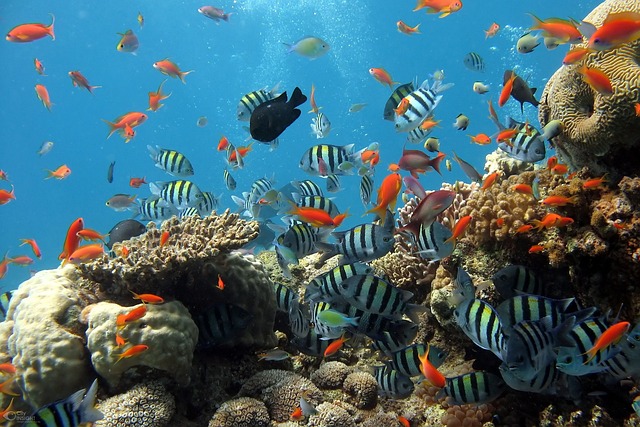Determining the maximum number of fish you can keep in your aquarium is essential for maintaining a healthy and thriving aquatic environment. Overcrowding can lead to stress, poor water quality, and increased risk of diseases among fish. In this blog post, we’ll explore the factors to consider when calculating the maximum fish capacity for different aquarium volumes, ensuring the well-being of your aquatic companions.
- The Inch-per-Gallon Rule:
One commonly used guideline for estimating fish capacity is the “inch-per-gallon” rule. According to this rule, you can keep one inch of fish (measured from the tip of the nose to the base of the tail) per gallon of water. For example, if you have a 20-gallon tank, you can accommodate up to 20 inches of adult fish.
While the inch-per-gallon rule is a simple starting point, it has limitations and should be used cautiously. It doesn’t account for variations in fish activity levels, waste production, or the overall bio-load in the tank. It’s crucial to consider other factors alongside this rule to ensure the well-being of your fish.
- Fish Size and Activity:
The size of the fish you plan to keep is an important consideration when determining the maximum fish capacity. Larger fish require more swimming space and produce more waste, impacting the overall stocking density. Smaller fish, such as neon tetras or guppies, can be stocked in higher numbers due to their smaller size and lower waste production.
Additionally, consider the activity level of the fish species. Some fish are more active and require ample swimming space, while others are more sedentary. Active fish may need more space to swim and explore, resulting in a lower stocking density for the tank.
- Filtration and Water Quality:
Proper filtration is essential for maintaining optimal water quality in your aquarium. The capacity and efficiency of your filtration system play a significant role in determining the maximum number of fish you can keep. A robust filtration system can handle a higher bio-load and help maintain stable water parameters.
When calculating the maximum fish capacity, consider the filtration capacity of your system, including biological, mechanical, and chemical filtration methods. A higher filtration capacity allows for more fish in the tank, provided that other factors, such as fish size and activity, are also taken into account.
- Species-Specific Requirements:
Different fish species have varying space requirements and social behaviors. Some species, such as schooling fish, feel more secure and less stressed when kept in groups. It’s important to research the specific needs of each fish species and their compatibility with tank mates.
Certain fish, like territorial cichlids, require more space and may need their own territories within the tank. Overcrowding can lead to aggression and stress in such species. Understanding the social dynamics and space requirements of your fish will help determine the maximum stocking density for your aquarium.
While the inch-per-gallon rule provides a basic guideline, determining the maximum number of fish for your aquarium requires careful consideration of multiple factors. Fish size, activity level, filtration capacity, and species-specific requirements all play a role in calculating the appropriate stocking density. By considering these factors and providing a suitable environment for your fish, you can ensure their well-being and create a vibrant and balanced aquatic ecosystem.
Remember, it’s always better to understock your aquarium than to overcrowd it. Start with a conservative stocking approach and monitor the behavior and well-being of your fish. Regular maintenance and water parameter checks will help you maintain a healthy and thriving aquarium for years to come.

